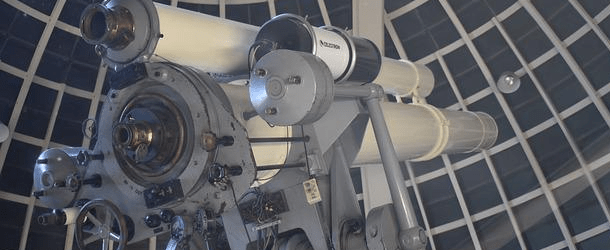A new quantum technique could enable telescopes the size of planet Earth

(Phys.org) According to a recent study by researchers from Australia and Singapore, a new quantum technique could enhance optical very-long baseline interferometry (VLBI) VLBI. IQT-News summarizes the research and its promise.
The new quantum technique is known as Stimulated Raman Adiabatic Passage (STIRAP), which allows quantum information to be transferred without losses. When imprinted into a quantum error correction code, this technique could allow for observations into previously inaccessible wavelengths. Once integrated with next-generation instruments, this technique could allow for more detailed studies of black holes, exoplanets, the Solar System, and the surfaces of distant stars.
The research was led by Zixin Huang, a postdoctoral research fellow with the Center for Engineered Quantum Systems (EQuS) at Macquarie University in Sydney, Australia. She was joined by Gavin Brennan, a professor of theoretical physics with the Department of Electrical and Computer Engineering and the Center of Quantum Technologies at the National University of Singapore (NUS), and Yingkai Ouyang, a senior research fellow with the Center of Quantum Technologies at NUS.
To put it plainly, the interferometry technique consists of combining light from multiple telescopes to create images of an object that would otherwise be too difficult to resolve. Very Long Baseline Interferometry refers to a specific technique used in radio astronomy where signals from an astronomical radio source (black holes, quasars, pulsars, star-forming nebulae, etc.) are combined to create detailed images of their structure and activity. In recent years, VLBI has yielded the most detailed images of the stars that orbit Sagitarrius A* (Sgr A*), the SMBH at the center of our galaxy.
It also allowed astronomers with the Event Horizon Telescope (EHT) Collaboration to capture the first image of a black hole (M87*) and Sgr A* itself. But as they indicated in their study, classical interferometry is still hindered by several physical limitations, including information loss, noise, and the fact that the light obtained is generally quantum in nature (where photons are entangled). By addressing these limitations, VLBI could be used for much finer astronomical surveys.
As they describe in their paper, “Imaging stars with quantum error correction,” the process they envision would involve coherently coupling the starlight into “dark” atomic states that do not radiate. The next step, said Huang, is to couple the light with quantum error correction (QEC), a technique used in quantum computing to protect quantum information from errors due to decoherence and other “quantum noise.” But as Huang indicates, this same technique could allow for more detailed and accurate interferometry.
By taking advantage of new quantum techniques and integrating them with VLBI, observatories will have another way to capture images of some of the most inaccessible and hard-to-see objects in our universe.
Sandra K. Helsel, Ph.D. has been researching and reporting on frontier technologies since 1990. She has her Ph.D. from the University of Arizona.



















